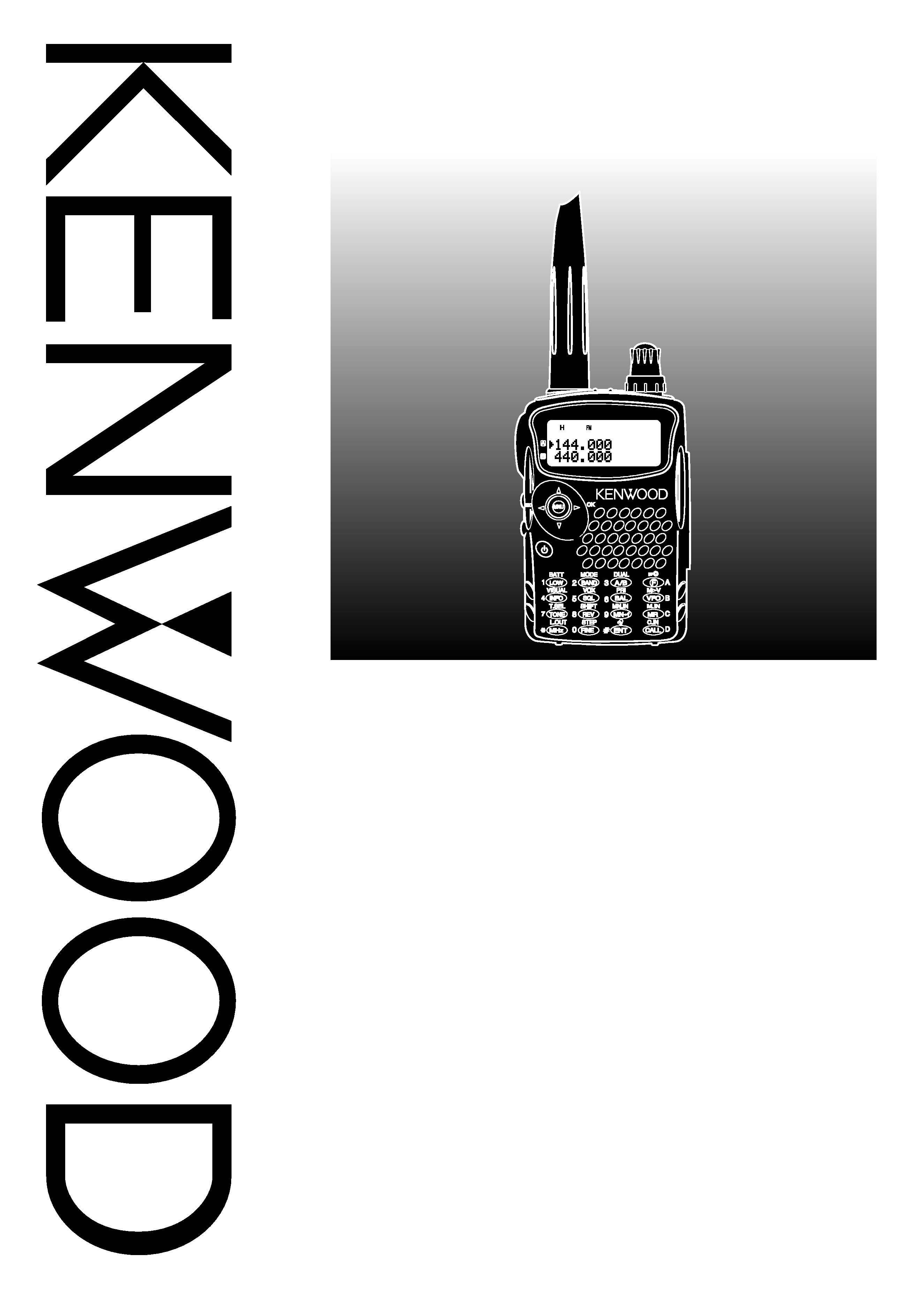
ii
CONTENTS
TONE FREQ. ID SCAN ......................................... 14
CHAPTER 6
MEMORY CHANNELS
SIMPLEX & REPEATER OR ODD-SPLIT MEMORY
CHANNEL? ........................................................... 15
STORING SIMPLEX FREQUENCIES OR
STANDARD REPEATER FREQUENCIES ......... 15
STORING ODD-SPLIT REPEATER
FREQUENCIES ................................................. 15
RECALLING A MEMORY CHANNEL ................. 16
Using the Tuning Control or /
keys ........... 16
Using a Numeric Keypad .............................. 16
CLEARING A MEMORY CHANNEL ................... 16
MEMORY RECALL MODE ................................ 16
NAMING A MEMORY CHANNEL ........................... 17
MEMORY CHANNEL GROUPS ............................ 18
RECALLING A MEMORY CHANNEL USING
MEMORY GROUP FUNCTION ......................... 18
ERASING MEMORY CHANNELS USING
MEMORY GROUP DELETE FUNCTION ........... 18
MEMORY CHANNEL TRANSFER ......................... 18
MEMORY \ VFO TRANSFER .......................... 18
CHANNEL \ CHANNEL TRANSFER ............... 18
CALL CHANNEL .................................................... 19
RECALLING THE CALL CHANNEL ................... 19
REPROGRAMMING THE CALL CHANNEL ...... 19
INFORMATION CHANNELS .................................. 20
RECALLING AN INFORMATION CHANNEL ..... 20
REPROGRAMMING THE INFORMATION
CHANNEL ......................................................... 20
CHANNEL DISPLAY .............................................. 21
CHAPTER 7
SCAN
NORMAL SCAN .................................................... 22
BAND SCAN ..................................................... 22
PROGRAM SCAN ............................................. 23
Storing Program Scan Frequency Range ...... 23
Performing the Program Scan ....................... 23
MHz SCAN ........................................................ 23
MEMORY SCAN .................................................... 24
ALL-CHANNEL SCAN ....................................... 24
GROUP SCAN .................................................. 24
Memory Group Link ...................................... 24
CALL SCAN ........................................................... 25
PRIORITY SCAN .................................................... 25
PROGRAMMING PRIORITY CHANNELS ......... 25
USING PRIORITY SCAN ................................... 25
INFORMATION CHANNEL SCAN ........................... 26
VISUAL SCAN ........................................................ 26
USING VISUAL SCAN (VFO) ............................ 26
USING VISUAL SCAN
(MEMORY CHANNEL) ...................................... 27
MEMORY CHANNEL LOCKOUT ........................... 27
SCAN RESUME METHOD .................................... 27
CHAPTER 8
SELECTIVE CALL
CTCSS and DCS ................................................... 28
CTCSS .................................................................. 28
USING CTCSS .................................................. 28
MODELS COVERED BY THIS MANUAL
MARKET CODES
NOTICE TO USER
PRECAUTIONS
THANK YOU ............................................................. i
FEATURES ............................................................... i
SUPPLIED ACCESSORIES ..................................... i
WRITING CONVENTIONS FOLLOWED .................. i
CONTENTS ............................................................. ii
CHAPTER 1
PREPARATION
INSTALLING THE Li-ion BATTERY PACK ............... 1
INSTALLING ALKALINE BATTERIES ...................... 1
INSTALLING THE ANTENNA .................................. 1
ATTACHING THE HAND STRAP ............................. 1
INSTALLING THE BELT CLIP .................................. 1
CHARGING THE Li-ion BATTERY PACK ................. 2
CONNECTING TO A CIGARETTE LIGHTER
SOCKET .................................................................. 2
CONNECTING TO A REGULATED
POWER SUPPLY .................................................... 2
CHAPTER 2
YOUR FIRST QSO
FIRST QSO ............................................................. 3
CHAPTER 3
GETTING ACQUAINTED
KEYS AND CONTROLS .......................................... 4
DISPLAY ................................................................. 5
BASIC OPERATION
SWITCHING POWER ON/ OFF .......................... 6
ADJUSTING VOLUME ........................................ 6
ADJUSTING SQUELCH ...................................... 6
SELECTING A BAND .......................................... 6
MULTI-SCROLL KEY ........................................... 6
TRANSMITTING .................................................. 7
Selecting Output Power .................................. 7
SELECTING A FREQUENCY .............................. 7
VFO mode ...................................................... 7
MHz mode ...................................................... 7
Direct Frequency Entry ................................... 7
CHAPTER 4
MENU SETUP
WHAT IS A MENU? .................................................. 9
MENU ACCESS ...................................................... 9
SELECTING A MENU LANGUAGE ......................... 9
MENU FUNCTION LIST .......................................... 9
ALPHABETICAL FUNCTION LIST ......................... 11
CHAPTER 5
OPERATING THROUGH REPEATERS
OFFSET PROGRAMMING FLOW ......................... 12
PROGRAMMING OFFSET ................................ 12
Selecting Offset Direction .............................. 12
Selecting Offset Frequency ........................... 12
Activating Tone Function ............................... 13
Selecting a Tone Frequency .......................... 13
AUTOMATIC REPEATER OFFSET ....................... 13
REVERSE FUNCTION .......................................... 14
AUTOMATIC SIMPLEX CHECK (ASC) .................. 14












